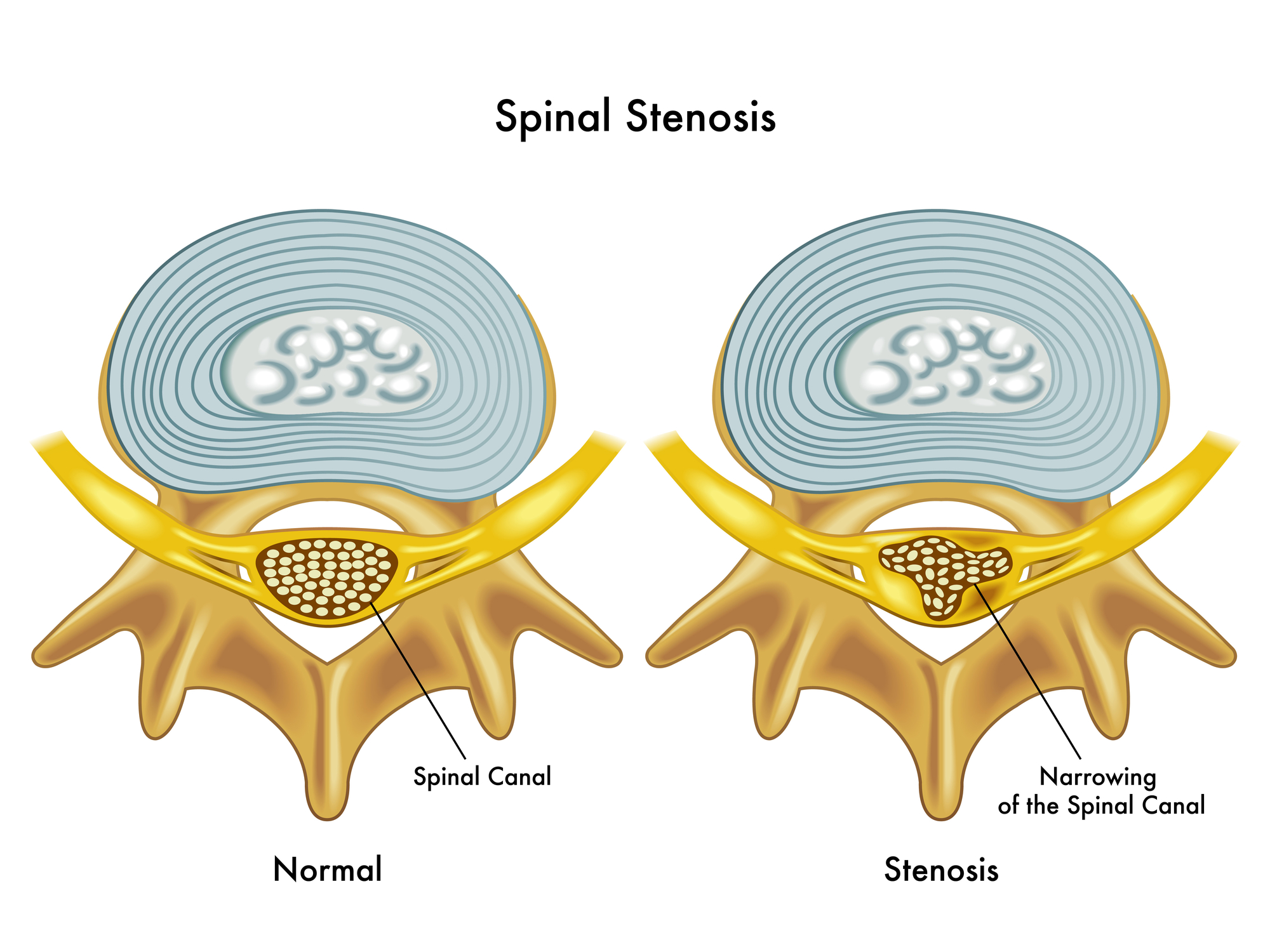The lumbar region of the spine consists of five vertebrae (or bones) between your ribs and pelvis, also referred to as your lower back. Lumbar stenosis puts pressure on the spinal cord and nerves in this region as the spinal canal narrows. This most frequently affects feeling in your lower back, hips, legs, and feet.
What are the symptoms?
Symptoms of lumbar stenosis range from mild to severe and may involve any number of the following:
- Pain, weakness, stiffness, tingling or numbness in the buttocks or legs
- Cramping in your calves when walking
- Pain radiating from your spine down to your thighs and legs (often referred to as sciatica)
- Loss of motor function in your legs
- Inability to control bowel or bladder function
- Pain relief when you bend forward or sit down

What causes lumbar stenosis?
Lumbar stenosis most frequently occurs in people over the age of 50. As we age, we are more prone to spinal injury and the aging process itself can cause the spine to grow weaker, allowing the spinal canal to narrow more easily.
Herniated discs are a common cause of stenosis in the lumbar spine as well. You have spinal discs between the vertebrae in your spine. A herniated disc occurs when the spinal disc is injured and its soft center pushes out. This can cause the spinal canal and nerves leading to it to become compressed.
Trauma, tumors, spinal deformity like scoliosis, and genetic diseases that affect bone and muscle development can also play a role in developing lumbar stenosis.
What treatments are available?
It’s important to see a doctor if you experience any of the symptoms outlined previously for an extended period of time. Your doctor can diagnose your pain by performing a neurological exam that checks your reflexes, muscle strength, walking ability, and ability to feel light touches or pinpricks (checking for numbness).
From there, you may require an imaging test like an x-ray, CT scan, MRI, or myelogram to further determine your condition.
Once a diagnosis has been reached, there are several treatment options you and your doctor may consider:
- Over-the-counter pain medications: generally recommended for mild to moderate pain
- Cortisone injections: a steroid that is injected into the area around the spinal nerves
- Physical therapy: this can be used to minimize the pain of a herniated disc or stenosis
- Spinal surgery: in more severe cases where body functions are disrupted or pain won’t go away, surgery may be necessary. Uncomplicated disc herniations can be performed in an outpatient setting, allowing the patient to return home within a few hours, however, it is important to avoid strenuous activity for several months following this procedure
If you have been experiencing symptoms of lumbar stenosis or any form of persistent spinal pain, please call our office today for an appointment with Dr. Dickinson.